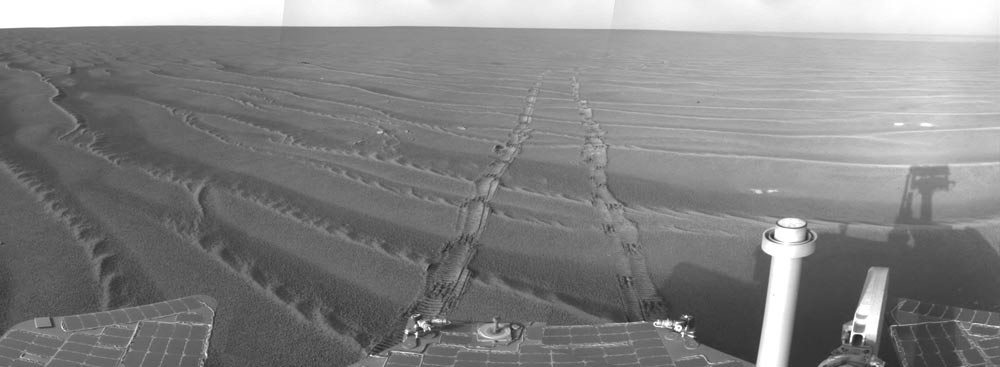Opportunity Rover Passes 10-Mile Mark on Mars

After morethan five years on Mars, NASA?s tireless Opportunity rover trundled past the10-mile mark on its odometer while on its way to its next target, EndeavorCrater, the agency said today.
Opportunity reached this marker after a 50-meter(164-feet) drive on sol 1,897 (sols are Martian days, which are about 40minutes longer than Earth days). The rover'stotal odometry now sits at 16,133.96 meters or 10.025 miles.
"For avehicle that was designed to travel 1 km over its lifetime, going 16+ km is apretty substantial accomplishment!" said Steve Squyres of Cornell University in an email to SPACE.com. Squyres is the lead scientist for theMars Exploration Rover Project.
Opportunity and its twin rover Spirit landed onMars in January 2004 ona mission to study the history of water on the red planet.
Scientistsrecently reportedthe results of Opportunity's two-year stint at Victoria Crater, whichrevealed that the whole region the crater lies in was likely shaped by waterand winds that blew up huge sand dunes.
On theother side of the planet, Spirit is currently stuck upto its hubcaps in soft dirt. Mission controllers are working on ways to getthe rover out and back on its way around the plateau Home Plate feature.
- Video Show ? Rover Tracks
- Video ? Opportunity's Mars Marathon
- NASA's 10 Greatest Science Missions
Get the Space.com Newsletter
Breaking space news, the latest updates on rocket launches, skywatching events and more!
Join our Space Forums to keep talking space on the latest missions, night sky and more! And if you have a news tip, correction or comment, let us know at: community@space.com.

Andrea Thompson is an associate editor at Scientific American, where she covers sustainability, energy and the environment. Prior to that, she was a senior writer covering climate science at Climate Central and a reporter and editor at Live Science, where she primarily covered Earth science and the environment. She holds a graduate degree in science health and environmental reporting from New York University, as well as a bachelor of science and and masters of science in atmospheric chemistry from the Georgia Institute of Technology.









